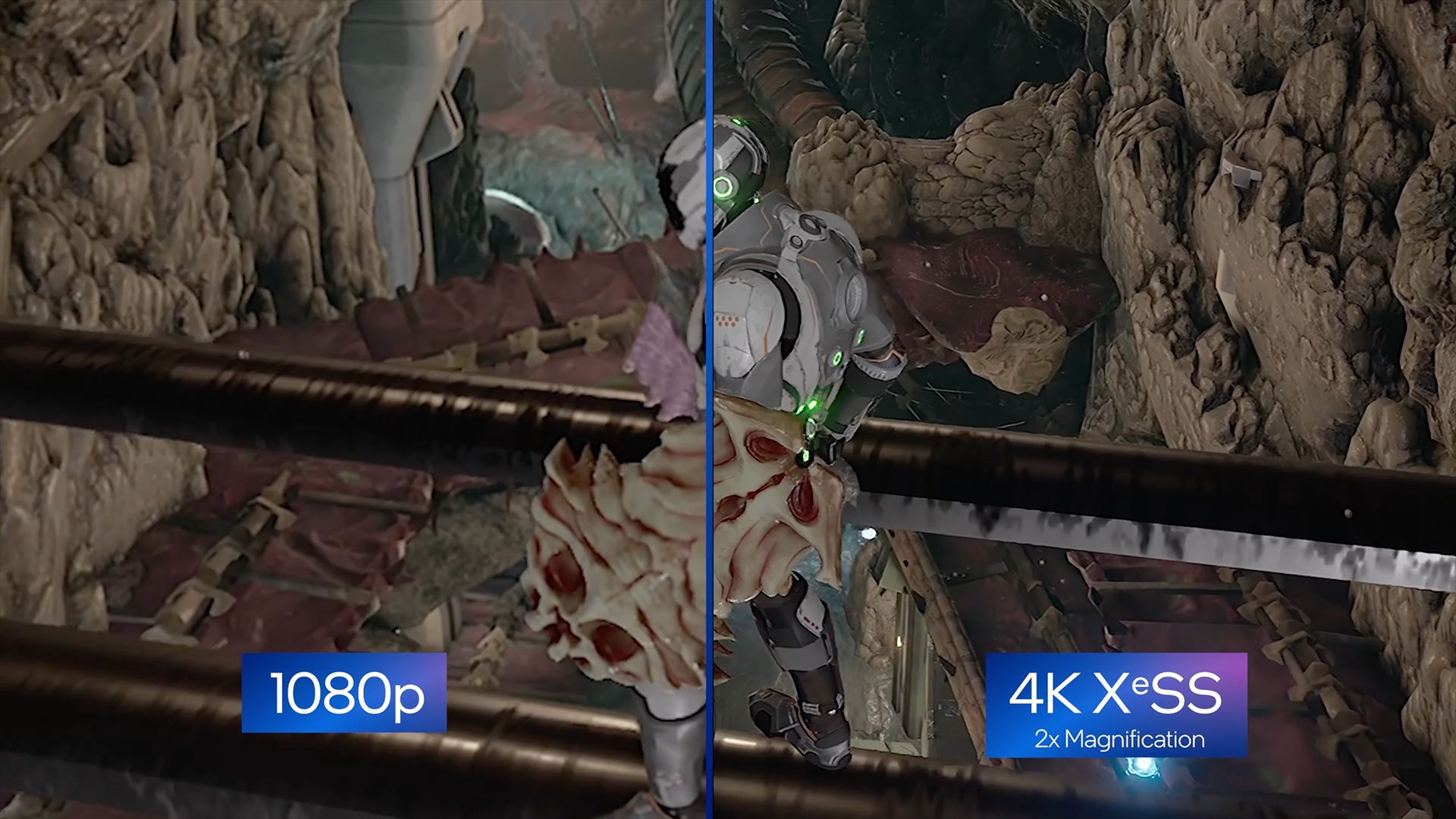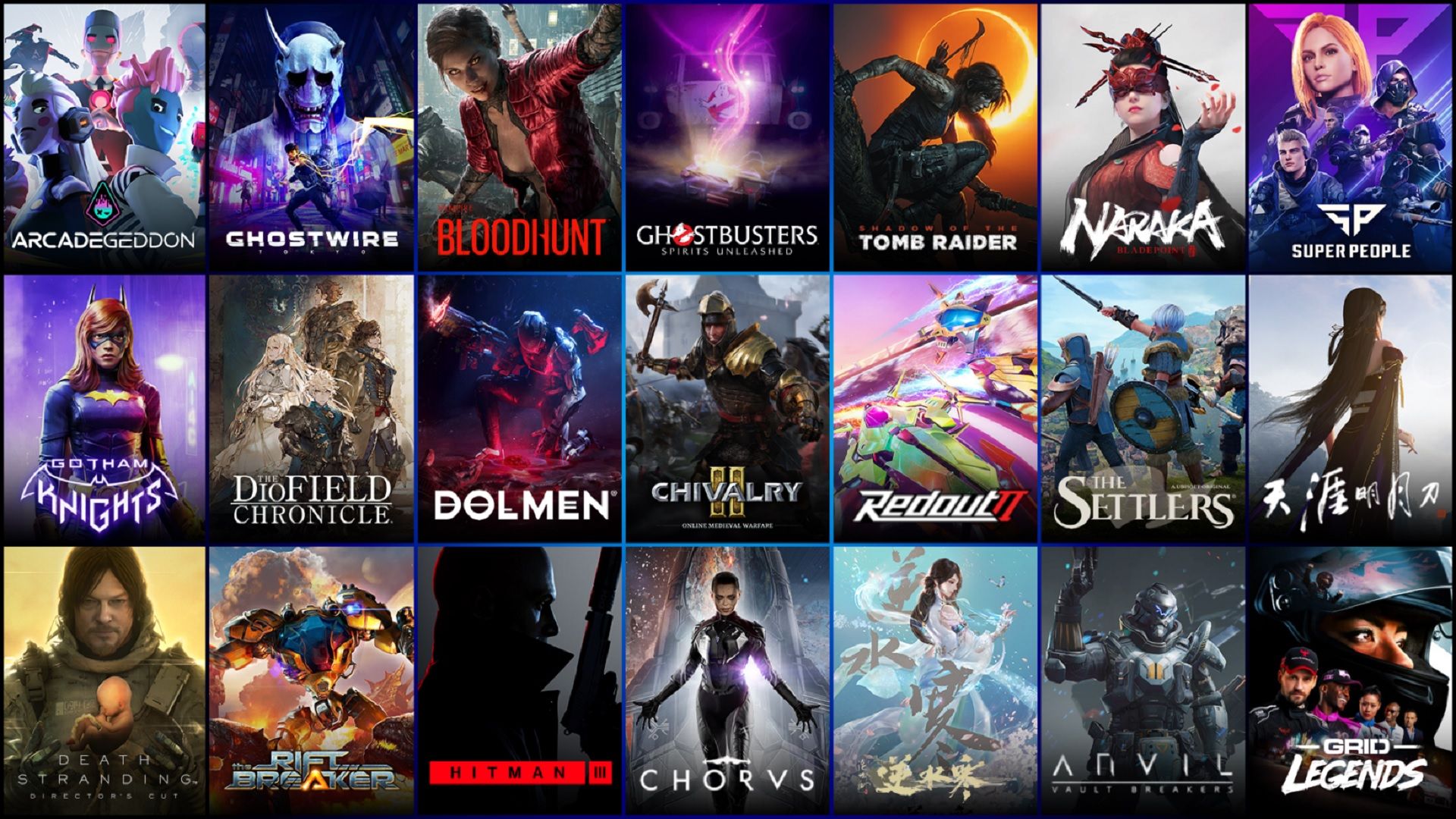Quick Links
When Intel entered the gaming hardware space with its own Arc graphics cards, the company also revealed that it was working on various technologies to ensure you have the best gaming experience.
One of those technologies offers an alternative to Nvidia's DLSS and AMD's FidelityFX Super Resolution.
Known as Xe Super Sampling (or XeSS for short), this is an AI-accelerated super sampling tech that's designed to be open-source. This means it's not only going to work with Intel's GPUs but also with those from its rivals.
We're exploring more about what that means and how it'll improve your gaming experience.
Is Xe Super Sampling just upscaling?
At a basic level XeSS is designed to take a game that's rendered at 1080p and upscale it to 4K.
This means in theory that it offers the same benefits as Nvidia's Deep Learning Super Sampling. That benefit is that you can play games at lower resolutions (meaning higher FPS) but use the technology to output a higher-resolution image to your gaming monitor.
Intel has shown a demo of this technology in action with side-by-side comparisons of gameplay footage rendered natively at 4K and the same footage upscaled by XeSS. You can barely tell the difference. And Intel claims that by using XeSS, gamers will be able to get twice the performance, meaning more FPS while still enjoying a high-resolution image.
The end goal here is to give you the best of both worlds - high frame rates and high resolution too.
How does Intel XeSS work?
Intel explains how Xess works like this:
"Machine learning helps synthesize images that are very close to the quality of native ultra-high-res rendering by reconstructing subpixel details from neighboring pixels, as well as motion-compensated previous frames. This reconstruction is performed by a neural network trained to deliver high performance and exceptional quality."
We've seen how much difference machine learning and AI is making in current times. Nvidia has been making waves with it for a while now, but Intel clearly knows how to leverage it to improve your gaming experience.
Which hardware supports Intel XeSS?
Intel has stated that XeSS is open source and it will be open for game developers to use. Xe Super Sampling will also work with any graphics cards that support Shader Model 6.4+ and DP4a instructions. Naturally, it's likely that XeSS will perform best on Intel's own Arc graphics processors but it will work with Nvidia and AMD products as well.
We've seen it work on all sorts of machines, including handheld consoles like the ROG Ally, where upscaling tech like this can make a big difference to performance and your overall gaming experience.
It also means that more affordable graphics cards can still deliver good performance meaning you can get better value for money thanks to Intel's technology.
Which graphics cards support XeSS?
As we have mentioned Intel has said that XeSS will work with GPUs from its competitors as well as its own Arc graphics cards.
As such any graphics cards that support Shader Model 6.4+ and DP4a instructions are capable of running Xe Super Sampling. This list currently includes the following:
- Intel Arc Alchemist GPUs (e.g. Arc A770 and the A750)
- Intel Xe-LP integrated graphics
- AMD RX 7000 graphics cards (RDNA 3)
- AMD RX 6000 GPUs (RDNA 2)
- Nvidia GTX 10-series graphics cards or newer (e.g RTX 40-series)
Xe Super Sampling quality settings explained
Intel has said that it's been working hard to ensure that Xe Super Sampling won't be negatively impacted by ghosting or blurring which is sometimes an issue with upscaling tech.
XeSS has several different image quality modes. Those modes include:
- Performance - runs at the fastest speed
- Balanced - the best of both worlds
- Quality - a focus on quality
- Ultra quality - gives the best image
Intel claims that XeSS can achieve high scaling ratios without negatively impacting quality and do so more effectively than other temporal and spatial upscaling techniques.
What games will XeSS work with?
Like other upscaling technologies, Intel XeSS will require some effort in order to work. The tech needs to be trained to work with the games so that the AI understands how to maximise performance and maintain quality.
That means that the list will be limited at first, though will grow over time. Currently, the list of games and apps includes:
- 3DMark
- Arcadegeddon
- Anvil
- Blacktail
- Boundary
- Bright Memory: Infinite
- Call of Duty Modern Warfare 2
- Call of Duty: Warzone 2.0
- Chorus
- Chivalry II
- Conqueror’s Blade
- Crime Boss
- Cyberpunk 2077
- Daymare: 1994 Sandcastle Demo
- Death Stranding
- Deadlink
- Deceive Inc.
- DESORDRE Demo
- Dying Light 2 Stay Human
- Dolmen
- Dysterra
- Enlisted
- Farming Simulator 22
- Forspoken
- Forza Horizon 5
- Ghostwire: Tokyo
- Ghostbusters: Spirits Unleashed
- Gotham Knights
- GravityMark Upscaler Tech Demo
- Grid Legends
- Grit
- Hi-Fi RUSH
- Hitman 3
- High on Life
- Hogwarts Legacy
- Judgment
- Instinction
- Like a Dragon: Ishin!
- Lost Judgment
- Martha is Dead
- Marvel’s Avengers
- Marvel’s Spider-Man Remastered
- Marvel’s Spider-Man: Miles Morales
- Moonlight Blade
- Myth of Empires
- Nightingale
- Ni Shui Han: Justice
- Night of the Dead
- Naraka
- Player Unknown's Battlegrounds
- Pinball FX
- Polars
- Propnight
- Redfall
- Scathe
- Shadow of the Tomb Raider
- Starship Troopers: Extermination
- Super People
- Super People 2
- Tactical Vengeance: Play The Games
- The Swordsman X: Survival
- The Settlers
- The Diofield Chronicle
- The Drift Breaker
- Vampire: Blood Hunt
- Warhammer 40,000: Darktide
- The Witcher 3 HD + RT
- Wo Long: Fallen Dynasty
This list obviously is quite short at the moment but the fact the tech is open source should see it grow rapidly over time.


